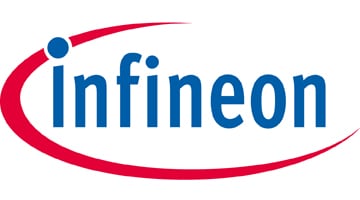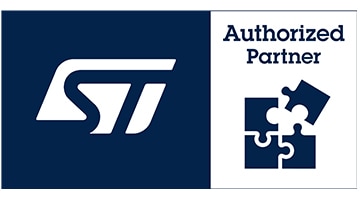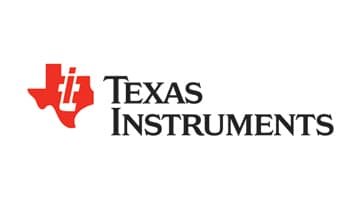Details
| Topologie | Aufwärtswandler |
| Schaltfrequenz | 800 kHz |
| IC-Revision | 2012.12.28 |
Beschreibung
Altera Cyclone& 174; V 28 nm FPGAs provide the industry's lowest system cost and power, along with performance levels that make the device family ideal for differentiating your high-volume applications. You'll get up to 40 percent lower total power compared with the previous generation, efficient logic integration capabilities, integrated transceiver variants, and SoC FPGA variants with an ARM-based hard processor system (HPS). The family comes in six targeted variants: Cyclone V E FPGA with logic only Cyclone V GX FPGA with 3.125-Gbps transceivers Cyclone V GT FPGA with 5-Gbps transceivers Cyclone V SE SoC FPGA with ARM-based HPS and logic Cyclone V SX SoC FPGA with ARM-based HPS and 3.125-Gbps transceivers Cyclone V ST SoC FPGA with ARM-based HPS and 5-Gbps transceivers
Eigenschaften
- TSMC's 28-nm low-power (28LP) process technology
- 1.1 V core voltage
- Wirebond low-halogen packages
- Multiple device densities with compatible package footprints for seamless migrationbetween different device densities
- RoHS-compliant optionsEnhanced 8-input ALM with four registers
- M10K—10-kilobits (Kb) memory blocks with soft error correction code (ECC)
- Memory logic array block (MLAB)—640-bit distributed LUTRAM where you canuse up to 25% of the ALMs as MLAB memory
- Native support for up to three signal processing precision levels(three 9 x 9, two 18 x 18, or one 27 x 27 multiplier) in the samevariable-precision DSP block
- 64-bit accumulator and cascade
- Embedded internal coefficient memory
- Preadder/subtractor for improved efficiencyDDR3, DDR2, and LPDDR2 with 16 and 32 bit ECC supportPCI Express® (PCIe®) Gen2 and Gen1 (x1, x2, or x4) hard IP withmultifunction support, endpoint, and root port
- Up to 550 MHz global clock network
- Global, quadrant, and peripheral clock networks
- Clock networks that are not used can be powered down to reduce dynamic power
- Precision clock synthesis, clock delay compensation, and zero delay buffering (ZDB)
- Integer mode and fractional mode
- 875 megabits per second (Mbps) LVDS receiver and 840 Mbps LVDS transmitter
- 400 MHz/800 Mbps external memory interface
- On-chip termination (OCT)
- 3.3 V support with up to 16 mA drive strength
- 614 Mbps to 5.0 Gbps integrated transceiver speed
- Transmit pre-emphasis and receiver equalization
- Dynamic partial reconfiguration of individual channels
- Single or dual-core ARM Cortex-A9 MPCore processor-up to 800 MHz maximumfrequency with support for symmetric and asymmetric multiprocessing
- Interface peripherals—10/100/1000 Ethernet media access control (EMAC), USB 2.0On-The-GO (OTG) controller, quad serial peripheral interface (QSPI) flash controller,NANDflash controller, Secure Digital/MultiMediaCard (SD/MMC) controller, UART,controller area network (CAN), serial peripheral interface (SPI), I2C interface, andup to 85 HPS GPIO interfaces
- System peripherals—general-purpose timers, watchdog timers, direct memory access(DMA) controller, FPGA configuration manager, and clock and reset managers
- On-chip RAM and boot ROM
- HPS–FPGA bridges—include the FPGA-to-HPS, HPS-to-FPGA, and lightweightHPS-to-FPGA bridges that allow the FPGA fabric to issue transactions to slaves inthe HPS, and vice versa
- FPGA-to-HPS SDRAM controller subsystem—provides a configurable interface tothe multiport front end (MPFE) of the HPS SDRAM controller
- ARM CoreSight™ JTAG debug access port, trace port, and on-chip trace storage
- Tamper protection—comprehensive design protection to protect your valuable IPinvestments
- Enhanced advanced encryption standard (AES) design security features
- CvP
- Partial and dynamic reconfiguration of the FPGA
- Active serial (AS) x1 and x4, passive serial (PS), JTAG, and fast passive parallel (FPP)x8 and x16 configuration options
Weiterführende Informationen
Artikeldaten
| Artikel Nr. | Datenblatt | Simulation | Downloads | Status | Produktserie | L (µH) | IR 1 (mA) | ISAT (A) | RDC (mΩ) | fres (MHz) | H (mm) | W (mm) | IR (A) | Montageart | IRP,40K (A) | ISAT,10% (A) | ISAT,30% (A) | Material | Z @ 100 MHz (Ω) | Zmax (Ω) | Testbedingung Zmax | IR 2 (mA) | RDC max. (mΩ) | Typ | Muster | |
|---|---|---|---|---|---|---|---|---|---|---|---|---|---|---|---|---|---|---|---|---|---|---|---|---|---|---|
 | 744311100 | SPEC | 9 Dateien | Aktiv i| Produktion ist aktiv. Erwartete Lebenszeit: >10 Jahre. | WE-HCI SMT-Hochstrominduktivität | 1 | – | – | 4.6 | 85 | 3.8 | 6.9 | – | SMT | 16.8 | 8 | 19 | Superflux | – | – | – | – | 4.6 | – | ||
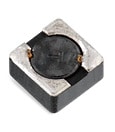 | 7440530047 | SPEC | 9 Dateien | Aktiv i| Produktion ist aktiv. Erwartete Lebenszeit: >10 Jahre. | WE-TPC SMT-Speicherdrossel | 4.7 | – | 1.95 | – | 40 | 2.8 | 5.8 | 2.4 | SMT | – | – | – | – | – | – | – | – | 38 | – | ||
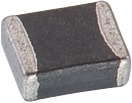 | 74479887310A | SPEC | 7 Dateien | Aktiv i| Produktion ist aktiv. Erwartete Lebenszeit: >10 Jahre. | WE-PMI Power-Multilayer-Induktivität | 10 | 600 | 0.125 | 300 | 20 | 0.8 | 2 | – | SMT | – | – | – | – | – | – | – | 850 | 390 | Hoher Sättigungsstrom | ||
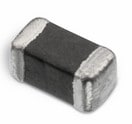 | 742792609 | SPEC | 8 Dateien | Aktiv i| Produktion ist aktiv. Erwartete Lebenszeit: >10 Jahre. | WE-CBF SMT-Ferrit | – | 2000 | – | – | – | 0.8 | 0.8 | 2 | SMT | – | – | – | – | 30 | 40 | 1000 MHz | 3000 | 40 | Hochstrom |
| Artikel Nr. | Datenblatt | Simulation | |
|---|---|---|---|
 | 744311100 | SPEC | |
 | 7440530047 | SPEC | |
 | 74479887310A | SPEC | |
 | 742792609 | SPEC |
| Muster |
|---|
| Artikel Nr. | Datenblatt | Simulation | Downloads | Status | Produktserie | L (µH) | IR 1 (mA) | ISAT (A) | RDC (mΩ) | fres (MHz) | H (mm) | W (mm) | IR (A) | Montageart | IRP,40K (A) | ISAT,10% (A) | ISAT,30% (A) | Material | Z @ 100 MHz (Ω) | Zmax (Ω) | Testbedingung Zmax | IR 2 (mA) | RDC max. (mΩ) | Typ | Muster |
|---|

